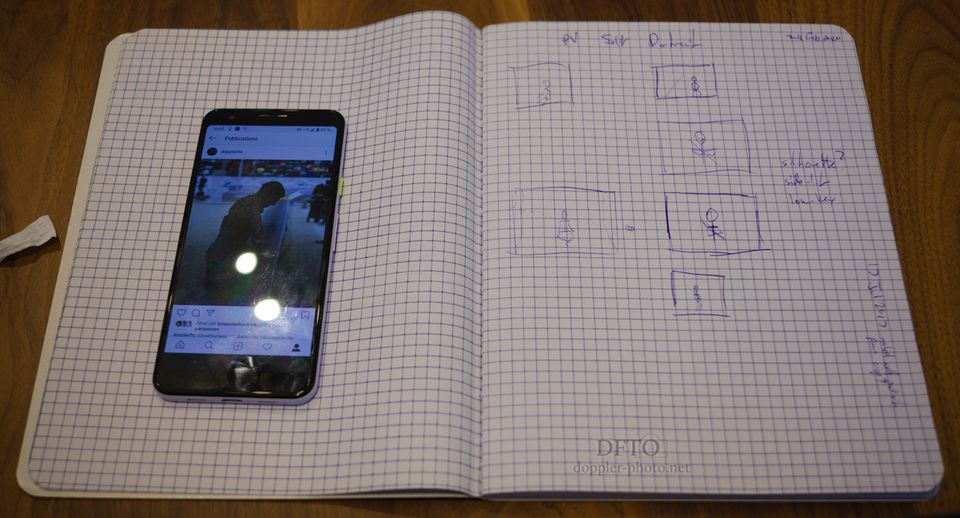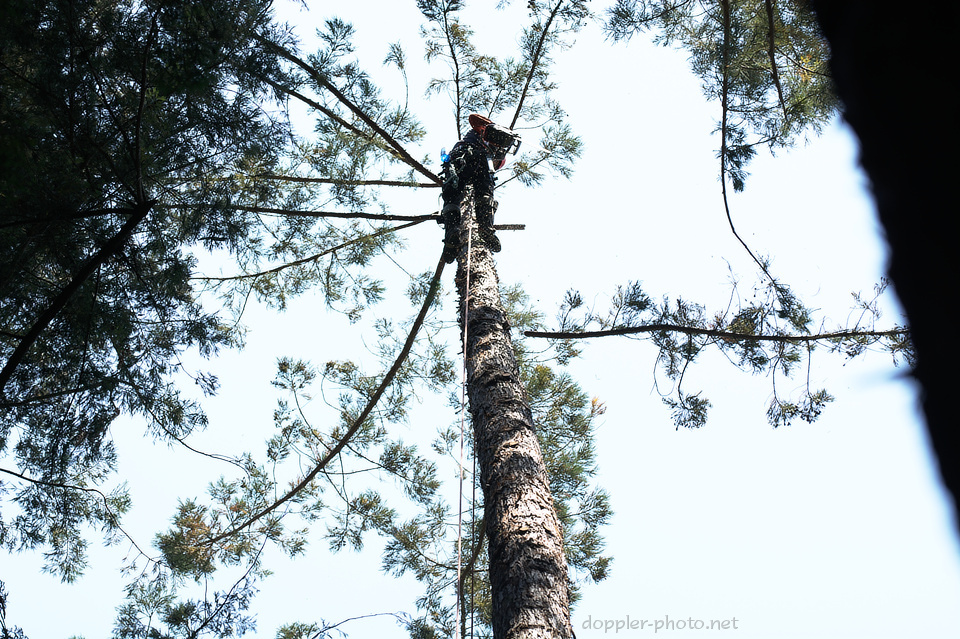
Part one of this series showed how Matt (the professional arborist in the picture) moved himself and his tools around the tree. Once he had the tools where they needed to be, it was time to put them to work: the next step was to trim the remaining branches, and to arrange them on the ground so as to create a reasonably soft drop zone for the logs that would eventually follow.
The process of trimming the branches (and dragging them into position) was straightforward, but included some unexpected nuances. Our standing orders were to never approach the tree until Matt gave the all-clear.
First things first, he would cut off a branch. Easy enough…

The branch (or, in this case, the treetop) would fall. Usually, it would fall to the ground, but not always. If a branch got stuck in the foliage of a neighboring tree, it would hang, sometimes precariously, until it was dislodged by another falling branch, a strong gust of wind, or even just the continual pull of gravity.
So whenever a branch was cut, we had to pay attention — did it hit the ground? And if not, where and how securely did it get stuck?

All of Matt's branch cuts happened about a foot away from the trunk. Afterward, he trimmed the remaining stub, which seemed to rocket down towards the ground.
The stubs were the main reason for us to keep away — the branches were easy to see, and the drag from all the needles slowed them down and kept them on a predictable trajectory. But the stubs they fell faster and hit the ground harder than the branches did; imagine a hammer dropping from 150 feet in the air.

Once the situation was stable, Matt would yell and the ground-workers would kick into gear, grabbing branches, schlepping them to the drop zone, and layering them to continue creating the bed.
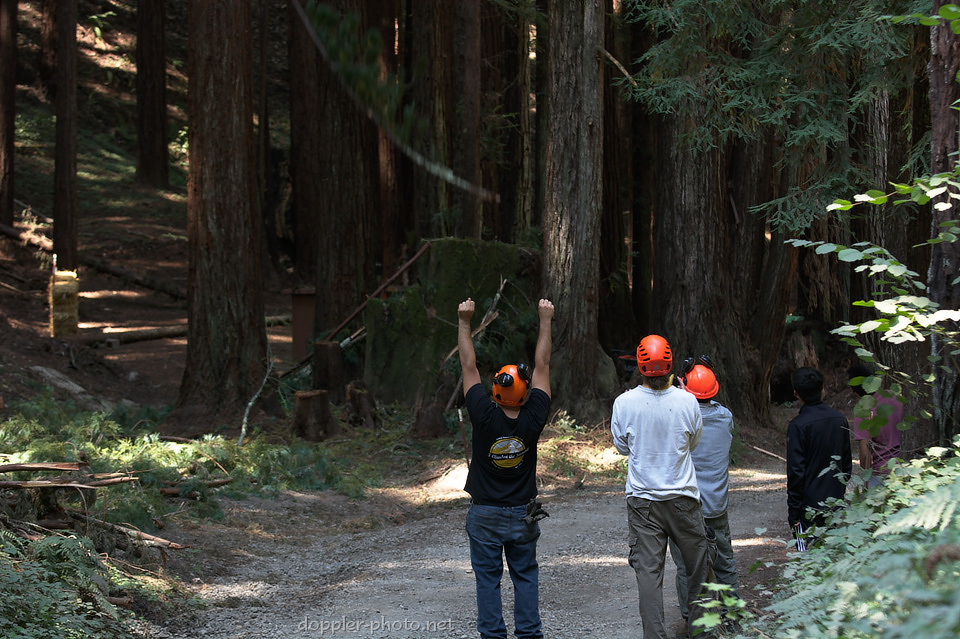
Sometimes Matt would cut off a branch without letting it fall, and would instead use the just-cut limb to basically spear-fish other stuck branches. It always felt like a triumph when the spear-fishing worked and the branches came down in pairs.
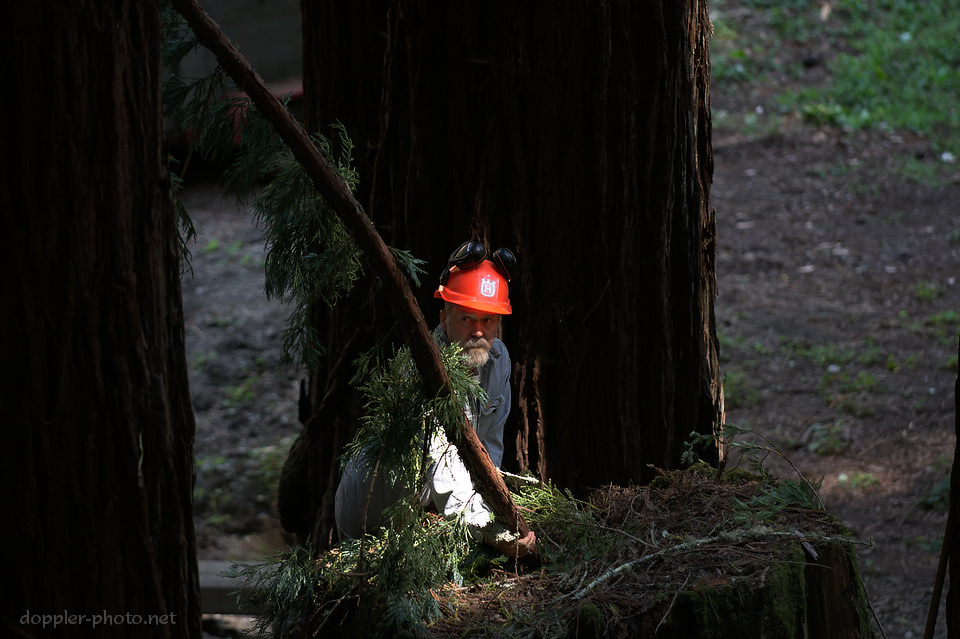
But celebration or not, the cutting would eventually stop, Matt would yell, and the ground-workers would fetch the downed branches. In this case, Mark extracts a branch that had lodged itself in the 5-foot-wide stump of a tree that had been felled decades ago.
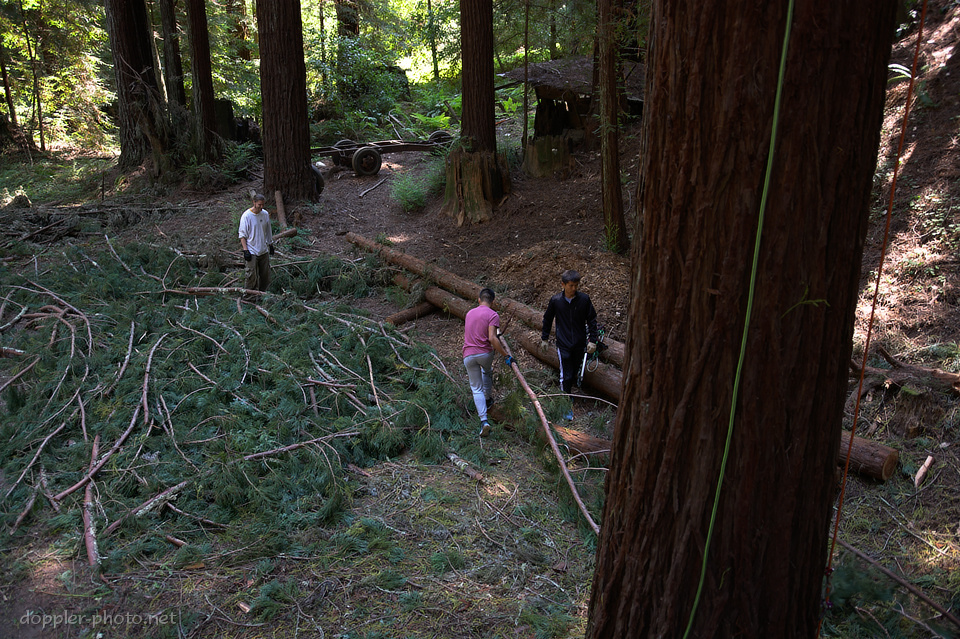
And the cycle would continue: cut, cut, yell, drag, stack. Cut, cut, yell, drag, stack. With each cycle, the bed grew deeper and wider, setting the stage for the next phase in the process… The full Timber! series:
- Timber! How to navigate a tree
- First, you make your bed…
- …And then you drop things in it
- Run the ground game




![[Doc Diaries] The Big Leagues](/content/images/size/w960/migrated_images/2021/04/doc-diaries-big-leagues/710_3349.jpg)
